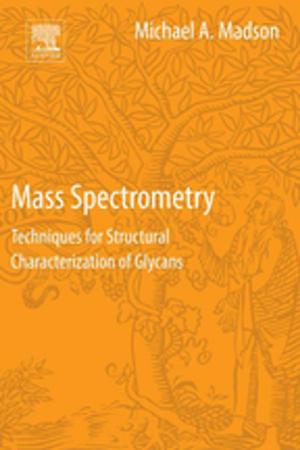The Microbiological Quality of Food
Foodborne Spoilers
Nonfiction, Science & Nature, Science, Biological Sciences, Microbiology, Technology, Food Industry & Science| Author: | ISBN: | 9780081005033 | |
| Publisher: | Elsevier Science | Publication: | December 1, 2016 |
| Imprint: | Woodhead Publishing | Language: | English |
| Author: | |
| ISBN: | 9780081005033 |
| Publisher: | Elsevier Science |
| Publication: | December 1, 2016 |
| Imprint: | Woodhead Publishing |
| Language: | English |
The Microbiological Quality of Food: Foodborne Spoilers specifically addresses the role of spoilers in food technology and how they affect the quality of food. Food spoilers represent a great challenge in food quality, determining the shelf-life of many products as they impact consumer acceptability of taste, texture, aroma, and other perceptions.
Divided into four sections, the first section defines microbial spoilage of food, with special emphasis on methods for the evaluation of spoiling phenomena and the status of their regulatory framework, examining both existing regulations and possible gaps. The second section examines spoiling microorganisms, covering a range of common spoilage microorganisms, including pseudomonas, yeasts, and molds and spore formers, as well as less-common spoilers, including lactic acid bacteria and specific spoilage organisms in fish.
The third section highlights spoiling phenomena within certain food types. Chapters cover dairy, fish, meat, and vegetables, and other products. The final section investigates emerging topics which point to future trends in the research of food spoilers. There is insight into microorganisms resistant to preservation, the role of biofilms in food quality, and the link between food safety and food spoilage, with a special emphasis on certain spoiling microorganisms which could be opportunistic pathogens. Written by an international team of leading authors, this book provides state-of-the-art coverage of this topic, which is essential to the shelf-life and quality of food.
- Provides in-depth coverage of the different spoilers which cause the deterioration of foods, including less common spoilers not covered in other publications
- Includes dedicated chapters covering the spoilage of specific products, making this book ideal for those working in the food industry
- Presents a framework for future research in the area of foodborne spoilers
The Microbiological Quality of Food: Foodborne Spoilers specifically addresses the role of spoilers in food technology and how they affect the quality of food. Food spoilers represent a great challenge in food quality, determining the shelf-life of many products as they impact consumer acceptability of taste, texture, aroma, and other perceptions.
Divided into four sections, the first section defines microbial spoilage of food, with special emphasis on methods for the evaluation of spoiling phenomena and the status of their regulatory framework, examining both existing regulations and possible gaps. The second section examines spoiling microorganisms, covering a range of common spoilage microorganisms, including pseudomonas, yeasts, and molds and spore formers, as well as less-common spoilers, including lactic acid bacteria and specific spoilage organisms in fish.
The third section highlights spoiling phenomena within certain food types. Chapters cover dairy, fish, meat, and vegetables, and other products. The final section investigates emerging topics which point to future trends in the research of food spoilers. There is insight into microorganisms resistant to preservation, the role of biofilms in food quality, and the link between food safety and food spoilage, with a special emphasis on certain spoiling microorganisms which could be opportunistic pathogens. Written by an international team of leading authors, this book provides state-of-the-art coverage of this topic, which is essential to the shelf-life and quality of food.
- Provides in-depth coverage of the different spoilers which cause the deterioration of foods, including less common spoilers not covered in other publications
- Includes dedicated chapters covering the spoilage of specific products, making this book ideal for those working in the food industry
- Presents a framework for future research in the area of foodborne spoilers















